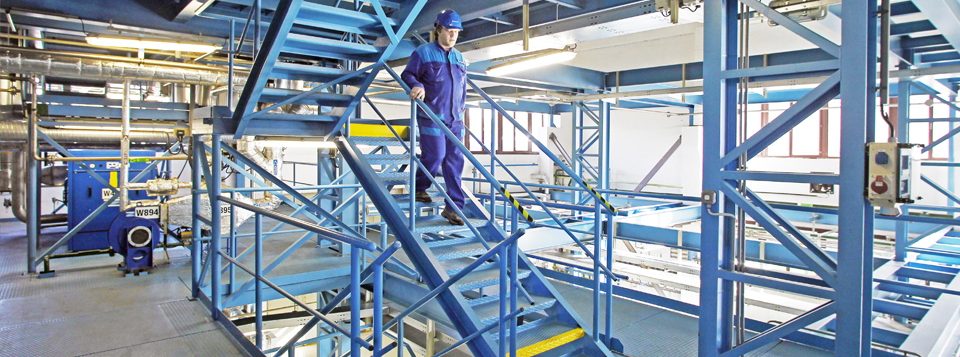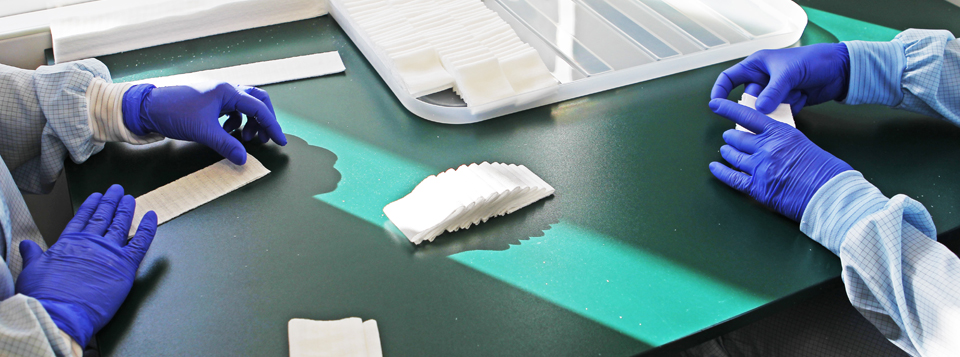
Clinical data
Clinical studies
- Jindřich Lahovský, MD. Evaluation of efficacy and safety of medical devices series OKCEL®. Study Report Ref. No AP-SY-1501. Data on file: 18640 – 033
- Jindřich Lahovský, MD. Evaluation of efficacy and safety of the medical device OKCEL® S. Study Report Ref. No AP-SY-1701. Data on file: 18640 – 033
Scientific references
-
Ing. Iveta Brožková, Ph. D. Department of Biological and Biochemical Sciences at the Faculty of Chemical Technology, University of Pardubice. Final report on testing the antimicrobial activity of the product OKCEL®. Data on file: 18640 - 034.
-
Jindřich Lahovský, MD. Comparison of basic physicochemical parameters, USP parameters and mechanical and biological performance of regenerated and non-regenerated oxidized cellulose-based haemostats. Study Report Ref. No. AP-SY-1901. Data on file: 88630-002_01.
- K. M. Lewis, DVM, D. Spazierer, PhD, M. D. Urban, HT (ASCP), L. Lin, PhD, H. Redl, PhD, A. Goppelt, PhD: Comparison of regenerated and non-regenerated oxidized cellulose hemostatic agents. [on-line]. Eur Surg. 2013; 45(4): 213–220. Available on: https://www.ncbi.nlm.nih.gov/pmc/articles/PMC3739866/
Videos
Synthesia, a.s. presentation
OKCEL® product range - 3D animation
Use of OKCEL® in open surgery
Use of OKCEL® in laparoscopic surgery
Comparison of adherence, shape stability and possibility of repositioning of OKCEL® versus SURGICEL® haemostats
Comparison of colouring, shape stability and possibility of repositioning of OKCEL® versus SURGICEL® haemostats
Comparison of compactness, shape stability and possibility of repositioning of OKCEL® versus SURGICEL® haemostats
Comparison of solution absorption of OKCEL® versus SURGICEL® haemostats
Comparison of in-vitro bioresorbability of OKCEL® versus SURGICEL® haemostats in peptone solution
Comparison of handling of products OKCEL® F and OKCEL® S
Testimonials
We have repeatedly tested topical absorbable oxidized cellulose based haemostats (manufactured by the company Synthesia a.s. and offered under the brand OKCEL) in the Surgical Department of the hospital Nemocnice Pardubického kraje a.s. The material has been used in a wide range of surgical procedures such as liver resection (application to a resection field), low rectal resection (both laparoscopic and open surgery, the material was used to stop the bleeding from a sacral bone) or laparoscopic cholecystectomy (application through a laparoscopic trocar to a bleeding surface). The material has proven to be a very effective haemostat, time to achieving haemostasis was absolutely sufficient and quick, the manipulation with the material was simple and smooth. Unlike other topical absorbable haemostats, OKCEL is more stiff after absorbing blood which we consider to be another advantage as it enables a greater stability and shape memory of the material in an application field.
There is performed wide range of thoracic surgeries within Cardio-Surgical Clinic of Faculty Hospital Hradec Králové. Our department performs yearly around 250 thoracic surgical interventions. Approximately 70 % of these surgeries needs to use the haemostatic material. Haemostatic materials based on oxidized cellulose are most frequently used to control and stop bleeding from chest surface and pulmonary surface after decortication and pleurectomy because surgeries of parenchymatous organs are very often accompanied with diffuse non-surgical type of bleeding which is very difficult to control. Advantage of OKCEL haemostats lies in the very easy formability and shape ability. Material of OKCEL haemostats has also very excellent adhesive properties for all kinds of surfaces. This ability is used for stop of the outflow of lymphatic liquids after the mediastinal lymphadenectomy within the oncosurgical therapy of lung cancer. There are different types of OKCEL products which differ in sizes and density so the concrete type of OKCEL haemostats can be chosen according to the type of surgery. OKCEL haemostatic material can be used also for limitation of air outflow from injured pulmonary parenchyma. Higher density and at the first sight higher stiffness of this material is advantage because higher weight in grams ensures long-term decrease of pH in pleural cavity with positive antiseptic effect which acts as a prevention against the rise of the inflammation. Higher density also helps to keep the consistency of the material after application which is helpful in case of needs to relocate the haemostat on the surgical wound.
In my clinical workplace I perform a wide range of dental surgeries such as tooth extractions (including complicated extractions from the jaw bone, operations of mucous membranes and alveolar ridge and, last but not least, insertion of dental implants). I have been given the opportunity to include products of a Czech manufacturer of absorbable oxidized cellulose haemostats offered under the brand name OKCEL and have included them in my therapeutic armament.
Since the spring of 2016 I have been using the following products: OKCEL H-T (standard density knitted form), OKCEL H-D (high density knitted form) and OKCEL F (fibrillar non-woven form). In all the aforementioned cases, any one of these OKCEL products can be used to stop the bleeding or control the course of subsequent healing after surgical procedures that carry a risk of later haemorrhage. All products within the OKCEL product range are 100% absorbable. Thanks to it, any complications with the ingrowing of the material into the wound and infecting the site, which I need to get the best outcome, can be avoided. Another advantage is the fact that no interactions with other drugs (systemic or topical) are yet known so the material can also be used in pregnant and nursing patients.
All versions of OKCEL are proven to offer local bacteriostatic and bactericidal effects due to the creation of surroundings with acid pH around the wound. The lower pH levels inhibit the growth and multiplication of Gram-negative and Gram-positive bacteria, including both aerobic and anaerobic strains, which are all present in the oral area; therefore the usage of OKCEL is a huge benefit in the initial phase of healing and blood clotting. This is appreciated by dentists especially after the extraction of an infected tooth. However, this should not be considered as an adequate substitution for systemic antibiotics.
OKCEL is packed in a sterile sealed primary and secondary package, which I open just before insertion of the material into the wound. The required shape and quantity of the material is adjusted using scissors and tweezers and then it is placed freely on the wound. I always use suture materials to fasten an OKCEL haemostat in the wound to keep it where I need it. This tightening of the wound with a suture also eliminates the risk of later bleeding from the wound, contributing to faster wound healing, providing a superior therapeutic effect. Therefore, suturing is recommended in all cases of use. OKCEL products should not be wetted before usage to support their absorption capacity. It is also not advisable to completely close OKCEL products in the wound as this could lead to the formation of a thrombus with local and systemic complications (although, in dento-alveolar surgery, this is not the case as in major surgery). If wound obliteration should occur during suturing, drainage is recommended. This avoids complications in the sense of thrombosis.
A particular type of product is selected according to the nature of the wound. I personally prefer OKCEL F as the most universal version. I really appreciate the fact that this material does not stick to the tools after being soaked in blood which could greatly impede the manipulation in an often obscure operating field. With OKCEL F, there is no risk of separating individual strands because the material holds together. In this way, truly effective haemostasis can be achieved.
FAQ

What are the differences between oxidised regenerated cellulose (ORC) and oxidised cellulose (OC)?
Oxidised cellulose is produced through the selective oxidisation of high-quality cotton – a pure natural material obtained from the cotton plant. The natural origin of the cellulose cotton fibres remains recognisable – the material is only cleaned prior to further processing.
ORC is generally obtained by chemical modification of cellulose contained in woody plants.

Does OKCEL® have antimicrobial properties?
The bactericidal and bacteriostatic properties of OKCEL® are a secondary positive effect that the use of our products brings to topical haemostasis. The lower pH levels inhibit the growth and multiplication of Gram-negative and Gram-positive bacteria, including both aerobic and anaerobic strains. However, OKCEL® is not a substitute for any therapeutic or prophylactic therapy that uses antimicrobial drugs to treat and prevent postoperative infections.

I would like to be an OKCEL distributor. What are the conditions?
Our sales strategy is based on long-term business relationships. In order to initiate cooperation with our company, please use the Contact Form - provide us with some basic information about your company and the required registration data. We will check your demand and our sales division will contact you

Is it possible to write a thesis for my bachelor’s or master’s degree on the topic of Oxycellulose in cooperation with Synthesia?
Yes. Propose a topic and the concept for your thesis. We welcome this type of cooperation. Write to us at anytime. We will get back to you!


